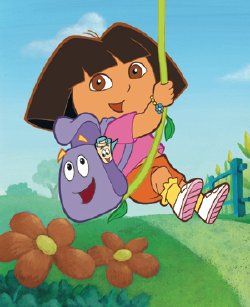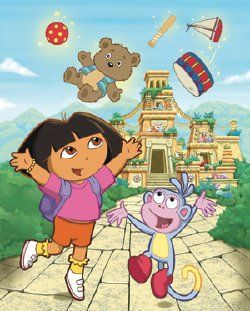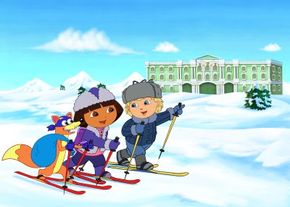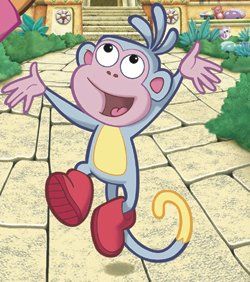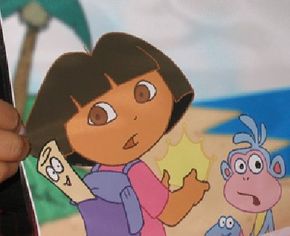"Dora the Explorer" is the world's most beloved preschooler. Dora's adventures with her best friend, a monkey named Boots, take her all around the world. With singing, dancing, and interactive play, Dora engages children to use their imagination and helps them learn.
Valerie Walsh, the co-creator, writer, and executive producer of "Dora the Explorer," provided us with a behind-the-scenes look at how "Dora the Explorer" works.
Advertisement
At a December 1997 meeting, Nickelodeon executives asked the network's in-house development team to come up with ideas for new shows. The execs had been working with outside creators to conceptualize shows, but were not satisfied with the results.
Walsh, a Nickelodeon employee who was in film school at the time, was at the meeting. Walsh brought her ideas to the group's next meeting and found that she and another Nickelodeon employee, Chris Gifford, had a similar concept: a story-driven interactive show starring a little girl heroine.
"I felt like I knew preschoolers and what was entertaining to them," Walsh said. "I loved the idea of trying to infuse teaching preschool-appropriate things with getting the kids up and making it an active learning experience for them."
Nickelodeon executives, intrigued with the concept, asked Walsh and Gifford to flesh out their ideas into a TV show. About four months later, "Dora the Explorer" was born.
Walsh and Gifford considered other characters for their concepts before they decided on Dora. One version told the story of Dora the rabbit and her friends who lived in the woods. The creators preferred a little girl all along as the lead character, but initially were restricted by monetary considerations.
"We weren't allowed to consider doing an animated show because, at the time, Nick couldn't afford animation," Walsh said. "It would have been a live action show with people wearing animal suits. We called it 'The Knock Arounds.'"
While they were uncertain about the future of "The Knock Arounds," Walsh and Gifford really liked certain elements of the concept:
- Characters take a journey
- Characters set and achieve a goal in every episode
- Interactive games get kids moving
- Stories have a lot of heart
- Strong female lead character doesn't easily give up
Once animation became an option for the show creators, the show started to look like "Dora the Explorer." Boots, who was originally a mouse, became a monkey; Dora turned from a rabbit into the strong little girl we know today."There are so many shows out there that have characters act in very stereotypical ways. We believed you should see someone on TV who knows that it's important to be smart and work well with others," Walsh said. "This is more important than the Barbie image. Chris had daughters and preschoolers at the time and agreed that there was a lack of female role models."At that stage of development, writer Eric Weiner joined the project, and the production process began. After six months, the group was ready to make a pilot. Designer Helena Giertz and her husband developed the look of the characters, and the Dora creators were overwhelmed with the results. "The minute Helena put her stuff down in front of us, we knew," Walsh said. "Her sensibility was very much in the preschool world. There's something so loveable about her characters. Dora's still the cutest kid I've ever seen."Giertz worked on the storyboards, which are a series of illustrations displayed in sequence for the purpose of previsualizing the show.. Nickelodeon's talent department put out a casting call to New York agencies for bilingual girls ages five to seven. After listening to the voices of ten or fifteen girls, the team met Kathleen Herles, who became the voice of Dora. By December 1998, a pilot, or prototype, of the show was ready. Nickelodeon tested the show with preschoolers, and the results were highly favorable. Within four months, Dora the Explorer was scheduled to air."Dora the Explorer" airs on Nick Jr., Noggin, and CBS. All episodes are created for Nick Jr. on the Nickelodeon channel. Noggin and CBS run episodes that have been retired from the thrice-daily schedule on Nickelodeon. Now that you know how "Dora the Explorer" came to be, we'll examine what goes into creating an episode. This is covered in the next section.
